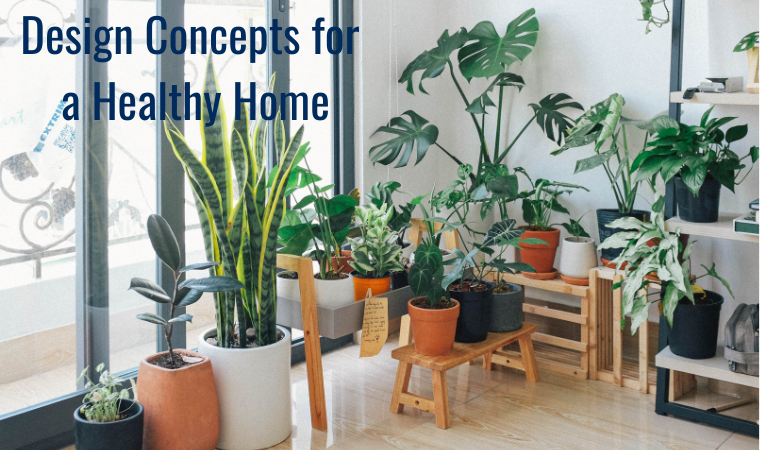
Design Concepts for a Healthy Home
Everyone wants their home to feel like a sanctuary. But wouldn’t it be even better to have one that would improve your health? With attention to textures, furniture layouts, and materials, you can create a home that is beautiful and promotes wellness.
Eliminate tripping hazards. As we age falling can be more common, so it becomes particularly important to eliminate as many hazards as possible. If you’re concerned about tripping or falling, consider using low pile carpeting rather than throw rugs. Keeping clutter at bay by providing sufficient hooks in dedicated spaces for shoes, jackets, bags and other everyday items can also keep tripping falls to a minimum.
Create a landing zone. If just walking through your front door causes you stress, you may need a more efficient home landing zone. Ample hooks for storing daily use items like keys, purses, backpacks and jackets are essential for a busy family. We also suggest including a bench to make taking on and off shoes a snap.
Declutter, declutter, declutter. If your house is like many, clutter is a constant battle, so you’ve got to stay on top of it. Do you have dishes you don’t use? Get them out of your house. Clothes that are worn and in poor shape? Take them to a textile recycling location. Participate in your neighborhood Buy Nothing program by gifting your neighbor something you aren’t using but they need. It’s a win-win!
Create a healthy kitchen space. The obvious is to have clean countertops and organized cabinets, but do you make room in your kitchen for storage for your quick, but healthy snacks? Clear storage is a good visual queue to grab something nourishing instead of an unhealthy alternative.
Connect with nature. Creating an indoor/outdoor living experience is ideal. This can be accomplished in several ways – sliding glass doors, covered patios, and NanaWall doors to name just a few. Not only can you expand your living space without adding additional square footage, but it can improve your mental health also.
Splurge on your fan. If there’s one home appliance that simply must work well, the bathroom fan is it! This hardworking appliance is the primary means of removing moisture (and smells!) from your home which significantly reduces the risk of mold damage. So even if you’re not ready to do a full bathroom remodel, don’t delay in replacing an aging fan that may not be in optimal shape.
Put indoor plants everywhere. Even if you don’t have a green thumb, skip the fake plants and go for real ones. Fake plants collect dust and allergens while real ones improve your air quality and reduce stress. Read here about other health benefits to be gained from indoor plants.
Choose non-toxic furniture. While flame retardant fabrics are good in theory, they aren’t great for our health. Many sofas and other pieces of furniture are sprayed with chemicals or made with unhealthy foams. Consider versions that are made without these items and contain a GOTS certification or CertiPUR-US label, and are made with low-VOC materials.
Create a great workspace. Hybrid work situations are very common and with this comes the need for a well-designed home workspace. Firstly, give yourself a dedicated space with good light. Secondly, sitting all day is bad for our health so include some alternative options like a sit/stand desk or a yoga ball for some movement. Good ergonomics is also important to a functional workspace. Finally, help yourself out and create a space with privacy for minimizing distractions.
Find your calm. Optimal wellness can be helped by creating a place to get centered at the start of the day or to de-stress once returning home. Since we spend so much money and energy on our homes, it makes sense to have a dedicated space for this important function. We love a calm and relaxing primary suite, but regardless of where, it is important to create a spot in your home to find your tranquility which can provide positive psychological and even physiological effects.









